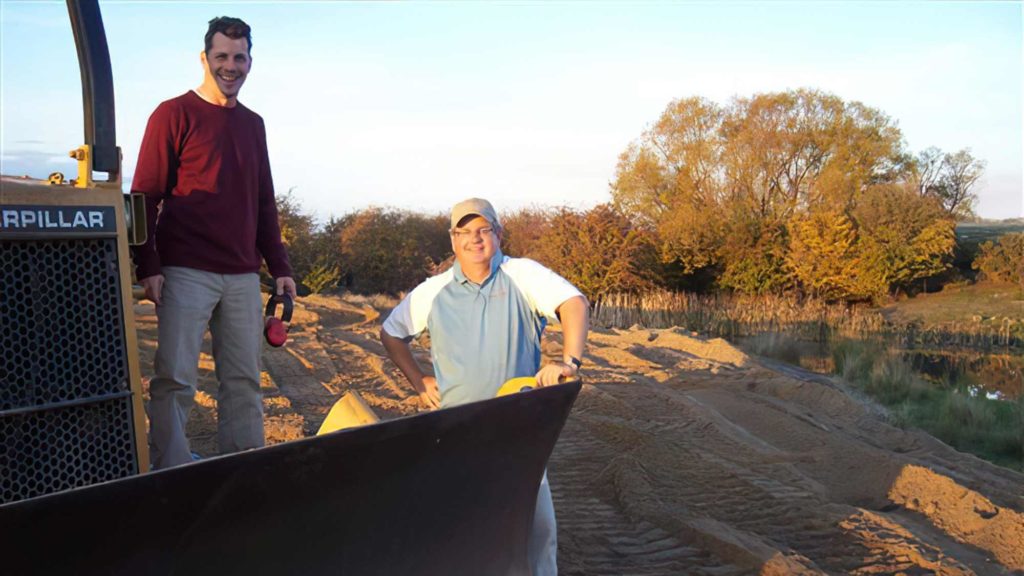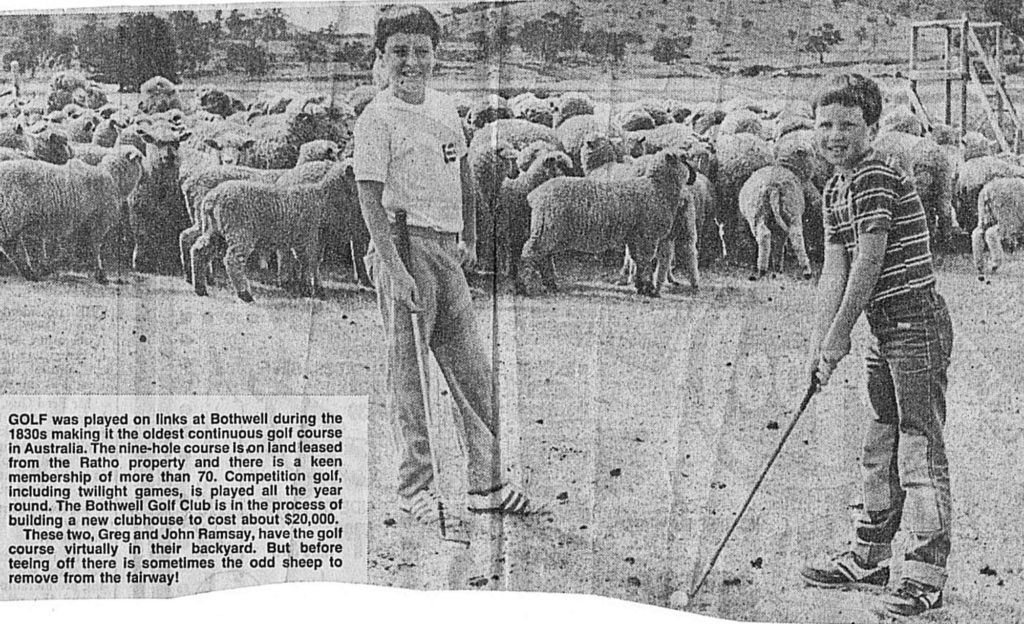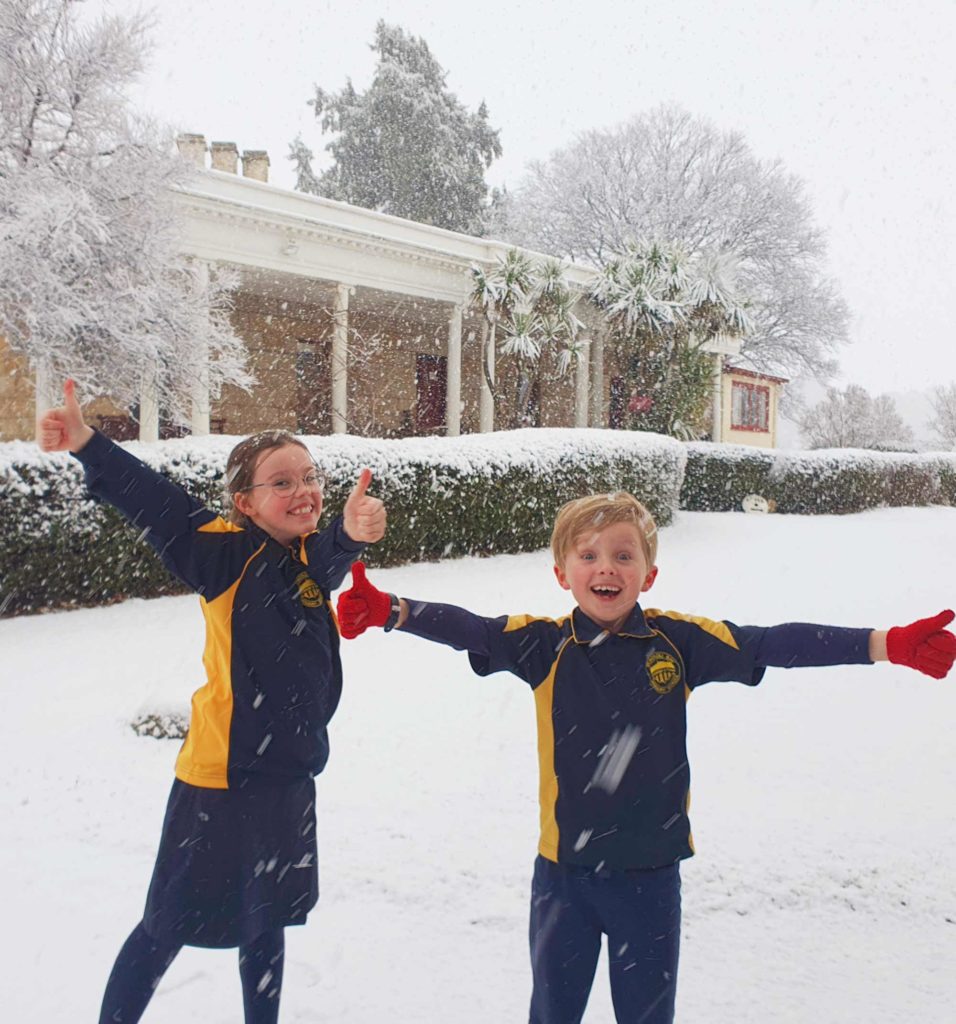ADVERTISING PROMOTION
It’s 20 years since Greg Ramsay burst onto the Australian golf scene with his intent to transform sandy dunesland at Bridport on Tasmania’s north coast into a world-class golf destination. In doing so, Ramsay and his colleagues hauled a quiet fishing village – and some little-known course designers – into golf greatness. Since then, he’s been more active than ever, developing whisky distilleries, helping golf course developments and saving golf clubs, far and wide around the world.
Most people didn’t think Barnbougle Dunes would be built. Not the farming lessor who leased the 23-year-old upstart his coastal land at Bridport. Not even the designers Ramsay hired.
“Greg read us the, ‘I’m gonna make you famous,’ script and we all drove off the site saying, ‘That’ll never happen,’” explains Mike Clayton, who Ramsay chose as an Australian to partner Tom Doak’s Renaissance Golf Design. The rest is history, and some might be surprised with what Ramsay claims as his greatest contributions.
“From my initial failed Foundation Membership promotion, I was able to go around and bring together a great group of equity investors,” he recalls. “Led by Peter and Heather Wood, we had fabulous families who believed in establishing world-class golf tourism in Tasmania. We were a tight-knit team who dared to dream. We had shared values and always put the golf experience and golf design first. Despite the heavy wooing from Troon Golf, Greg Norman Design and Macquarie Bank’s Medallist Developments, I’m proud we stuck with Tom Doak on the first course and worked so long and hard with Mike Keiser to create Lost Farm as Bill Coore’s only Australian design: the only place in Australia golfers can play a pair of layouts by two of the game’s greatest ever architects, side-by-side.

“And it’s all looked after by so many of the locals we hired as greenkeepers to train and build Barnbougle. That was another legacy, as was putting on Australia’s first disabled greenkeeper, a guy I just love. He now has one of the best turf CVs in the country.”
Those investors have stuck with Ramsay and his refreshing approach to course design, golf tourism and the golf industry in general. Justin Hetrel, a major investor in both Barnbougle Dunes and now the spectacular Arm End project in Hobart, explains it.
“I call him the Senator. He’s always had this golf and business intellect well beyond his years; this wise head that seems to know how golf should look and how it should operate,” Hetrel says. “How he brought that property development in and saved Claremont Golf Club, or turned a low-grade commission on King Island to sustain their airport into two internationally acclaimed golf courses, I’ll never know. Turning that historical novelty at Bothwell into such a fun, quirky, golf magnet was the last time I’ll doubt him. People listen and follow.”
The renowned Keiser family in Chicago, who backed Ramsay’s Barnbougle Dunes and Lost Farm developments, listened to his lobbying long enough to have a look at his old friend Craig Haltom’s project in Wisconsin; now the acclaimed Sand Valley.
“We’re currently building the fourth golf course here,” explains Haltom, a rising star among course designers and a construction contractor who became firm friends with Ramsay straight out of university in Edinburgh. Both were on a pilgrimage to the great linkslands of Scotland back in 2000.

“Greg’s success in turning a dream into a reality at Barnbougle was such an inspiration for me, personally. It was terrific for him to make the introduction to the Keisers and work so hard on reaffirming to them that sustainable remote golf didn’t have to be on the coast, after their seaside successes with Bandon Dunes and Cabot Links.”
Meanwhile, Ramsay downplays his role: “I like doing those introductory things. Usually over a few whiskies, or a quick round of golf, and then follow-up, follow-up. If I can see a common purpose and a pathway, and I have the relationships and belief, I don’t know why anyone would give up. Craig hasn’t, I didn’t and the Keisers keep on opening up new opportunities around the world.”
What many people don’t know is that golf for Ramsay has always been interwoven with whisky. Since finishing Barnbougle Dunes, he has been a part of dreaming up and developing distilleries in Tasmania, Chicago, New Zealand and even back in Scotland: Kingsbarns Distillery beside the 14th green on a course where Ramsay caddied.
“When I first went to live in St Andrews at 18 years of age, I caddied during the day but worked at night in the world’s largest whisky bar. It was an incredible year of inspiration. I brought back to Tasmania two separate business plans to funnel golfers through Bothwell’s National Golf Museum and the rich golf history on my family farm, Ratho.”
Those plans were great links golf courses and restoring an old flourmill on the adjoining Nant farm into a distillery destination. Now owned by Lark Distillery, Nant is Australia’s oldest working flourmill within a stunning colonial complex, adjoining Ratho Farm Golf Links, which is Australia’s oldest golf course.

“I actually worked for Bill and Lyn Lark while I was raising the funds to build Barnbougle, and just love collaborating with the Lark family,” Ramsay says. “If it wasn’t for Bill and Lyn’s guiding hand, Kingsbarns would never have been built, we wouldn’t have one of the world’s snazziest new distilleries at Speight’s Brewery in downtown Dunedin, and Dan Murphy’s wouldn’t showcase our New Zealand Whisky Collection or be about to launch the golf-themed Journeyman Distillery range from Chicago.”
If it isn’t all confusing enough, Journeyman Distillery, an hour outside Chicago, is owned by Ramsay’s St Andrews housemate from 20 years ago, Bill Welter, who was part of their circle of twentysomething golf geeks traversing Scotland. Welter and his father were Foundation Members of Barnbougle Dunes, are major investors in Arm End, and Bill was a college-golf teammate of Haltom, who has built him America’s largest privately owned putting green as an attraction at Journeyman Distillery. In a recent article – “How one of America’s coolest putting greens came to be” by Josh Sens in US Golf Magazine – Bill said, “Greg was an inspiration to me from the beginning. I like to think I followed in his footsteps, at least in my own small way.”
For Ramsay, it’s all about making the world a better place for his children and their kids to enjoy.
“Ratho Farm will always be my soul project,” he says. “It’s where I grew up, it’s on the farm my great-grandfather bought during the Depression. As a family, we’re all still very tight-knit. My brother and his wife run the farm and my little kids love playing with their cousins and getting to know the land just like we all did. I’m not sure there is any greater joy than seeing them connect with their own family heritage, whether it be looking through old family diaries, working among the livestock, learning to chip and putt, or even helping to host guests. And I’ve not even taken them along the river to catch a trout yet!”



